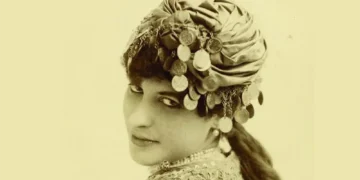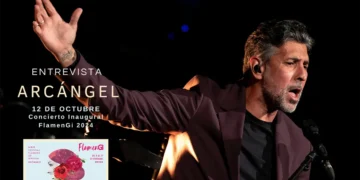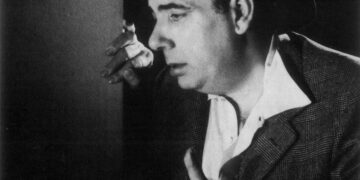|
50 Festival Internacional de
|
|
Text: Estela Zatania On Tuesday in La Unión, the fiftieth anniversary series of concerts closed spectacularly with Paco de Lucía’s recital. Throughout the day there had been other major happenings. At seven o’clock the official inauguration of “Miguel Poveda Street” took place with the presence of the mayor of La Unión, various municipal authorities, plenty of Poveda’s admirers, and the singer himself who was visibly overcome with emotion. Shortly afterwards, the little tourist train took us to the Parque Minero where we descended to the large cavern of the Agrupa Vicenta mine specially equipped for shows to witness the extraordinary acoustic recital of singer Arcángel, with Miguel Ángel Cortés on guitar. In this privileged venue, with minimal lighting, the sweet fine voice of the young man from Huelva created a magical ambience. Later on, on the main stage of the festival, the Japanese ambassador to Spain, Fumiaki Takahashi, received the Cathedral del Cante prize in recognition of his country’s intense activity and interest in the art of flamenco. And finally it was the moment for the arrival of the legend… “Paco de Lucía, the best guitarist in the history of flamenco” proclaimed the press release breathlessly. But the technique that left maestros and flamenco fans agape more than four decades ago now looks a little outdated compared to current levels, and the abilities of any sixty-something individual are not what they were at twenty-something. Nevertheless, Paco de Lucía’s achievements go far beyond virtuosity. The prodigy from Algeciras revolutionized and renewed the soundtrack of the entire genre; flamenco guitar had reached adulthood and needed to function as more than alternative percussion. Paco has transcended his own talent and persona to become the symbol of the revamping and world-wide expansion of flamenco, an achievement that has earned him numerous awards and recognition, most recently Doctor Honoris Causa at Boston’s Berklee College of Music in the United States. Those of us who remember flamenco before the reign of Paco de Lucía, then witnessing his arrival, ascent and conquest, now attend his recitals with a feeling of profound nostalgia for the early years full of the adventure of creation, and the discovery of endless possibilities the young man laid out for us. Now there are few surprises to be found in the maestro’s performances – but then Einstein didn’t have much to say either after postulating E=mc2 in his early twenties. And that’s just fine; great achievements don’t have a shelf life. With a series of noteworthy compositions from his well-known repertoire, beginning alone for rondeña and little by little incorporating his nephew Antonio Sánchez on second guitar, Farruco for the dance portion, the singing of David de Jacoba and Duquende, harmonica and keyboard of Antonio Serrano, Piraña on percussion and Alaín Pérez on bass, we were shown the evolution of Paco’s carreer, from the most classic flamenco, right up to the jazz repertoire he has been cultivating for some years. There were no potted palms this time, but the crispy rasgueados, bell-like tones and characteristic spring-action compás left no doubt as to the author of those sounds. Duquende’s voice evoking Camarón at every turn, completed the family portrait. The impact of Farruco’s powerful dancing got the audience even more lathered up, and it was a pleasure to discover the contemporary sound of young singer David de Jacoba. It’s hard to imagine other master guitar soloists being so at ease accompanying dance and cante; Paco never lost sight of the flamenco objective which he clearly continues to enjoy, because flamenco resides in him despite his ongoing love-affair with jazz. Bulerías compás is the motor that drives nearly all the pieces, even when disguised as other forms. In the second part of the recital there are many long flat moments when this maestro of maestros simply strums along to provide inoffensive back-up for the music of group members. But all is forgiven and the inevitable encore finishes the job of driving the crowd wild when a few notes of “Entre Dos Aguas” are barely insinuated. Now all the remains are the four days of contests which are, for many, the main attraction of the Festival de La Unión, and on Saturday night we will know the winners of this historic edition of a historic event. More information: |
Descubre más desde Revista DeFlamenco.com
Suscríbete y recibe las últimas entradas en tu correo electrónico.





























